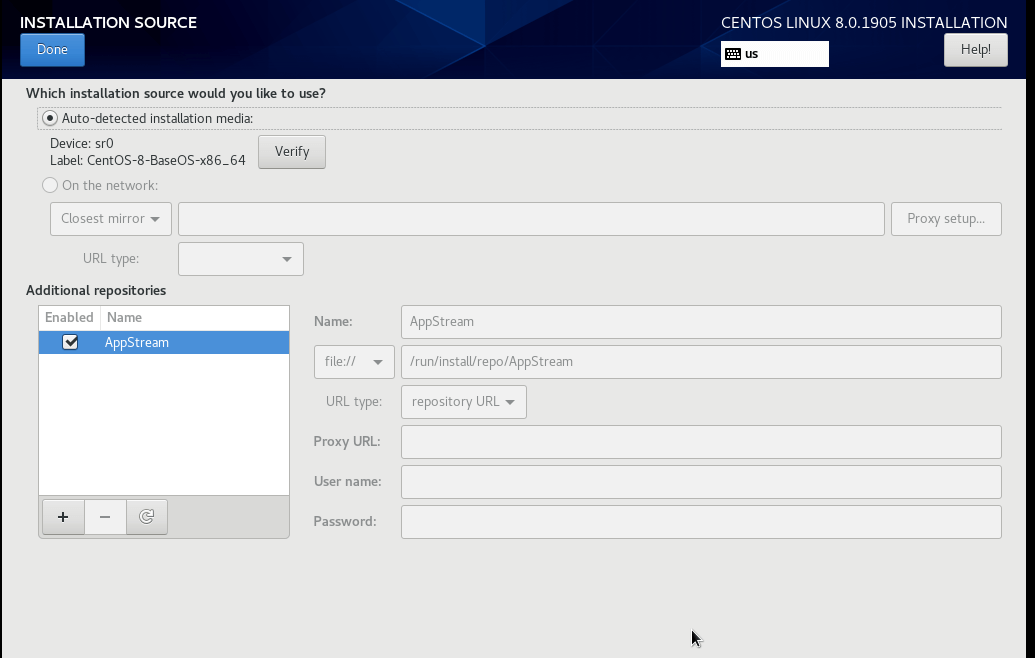CentOS (Community Enterprise Operating System) is a Linux distribution. An operating system distribution is a form of system software distribution. CentOS is based on the commercial Linux distribution, Red Hat Enterprise Linux (RHEL), which is intended for corporate use and has been commercially supported for ten years.
CentOS is an open-source server operating system provided free of charge. It is aimed at business and enterprise customers. CentOS is suitable for server installations requiring consistency and reliability. It has a graphical interface and runs on PCs with 32-bit and 64-bit architecture.
CentOS 8 features
CentOS 8 is the eighth version of the operating system, released in 2019.
It is based on Linux kernel version 4.18. Among the important changes is the replacement of the package manager yum with dnf (Dandified YUM), which lacks the disadvantages of its predecessor. Another important innovation for server administrators is the replacement of the nftables framework with iptables. The firewall daemon now uses it by default. In addition, the TCP stack has been updated to support improved connection handling speed.
But there are other features that make CentOS popular among system administrators.
-
Embedded solutions for server administration. The CentOS distribution contains a set of solutions designed to make the life of a network administrator easier when working on a dedicated server. CentOS is perfectly compatible with the virtual server control panel.
-
High level of reliability. The operating system smoothly runs on 64-bit and 32-bit computers. The high speed of CentOS allows the OS to be used for large projects.
-
Strong community. You can always find a ready-made solution for most tasks and consult with more experienced colleagues.
-
A long period of support for the systems. For a long time, the developer company has claimed a support period of up to 10 years for versions 6, 7, and 8. However, in 2021, just two years after the release of CentOS 8, the company announced it would stop developing and supporting classic CentOS in order to promote a new solution, CentOS Stream. Its support period is stated to be 6 years.
-
Security. Since the project is very popular, many developers have put their efforts into creating a better security system and fixing existing vulnerabilities.
How to install CentOS

Below is the algorithm of CentOS Linux 8 installation on the physical machine.
Step 1: Download the OS image. On the official Centos.org website, in the download section, you can choose from two versions of the distribution kit - standard and Stream.
Step 2. Create a bootable USB drive. You can use third-party programs like Rufus for Windows or WOEUSB for Linux to record an operating system image onto a bootable USB drive. Once a bootable USB is ready, you need to configure BIOS to boot from the USB device.
Step 3. Installation of the operating system. The server is booted from the CentOS 8 installation media. The first item to be selected on the welcome screen is "Install CentOS Linux 8". The installation process will begin by loading the installation components onto the machine. After a few seconds, the graphical installer interface will appear. Next, you will be prompted to choose the language of the OS.
Step 4. Basic Configuration. You will be prompted to choose the preferences for the installation process. Here are the two sections of interest – Software Selection and Installation Destination.
Let's start with Software Selection.
You will be prompted to select the components to be installed and the options for the environment to be installed. Leaving the default settings will install the server with the graphical shell and standard package set.
Alternatively, you can choose other options from the list in the left-hand window, such as installing a more user-friendly version of the operating system on a desktop or laptop, or a minimal server version with basic functionality.
If you want to use CentOS as a hypervisor, select Virtualization Host.
Step 5. Preparing the disk. In the second section of the basic settings ("Installation Destination"), you will have to specify the partitioning of your drive for use by the operating system. Preferably you should do this yourself, but the developers have also included an automatic mode.
Step 6. Setting up the network. Go to the "Network & Host Name" section to set the network settings. On the top right of the window, set the network connection switch to "On". Then you may configure connection settings manually, or if the machine is physically connected to the network and has access to the DHCP server, the installer will configure it. It remains to fill in the Hostname field in the lower left corner, press Apply, and then Done.
Click Begin installation to start the installation.
At the end of the installation, set a password for root and add users. Once the installation process has been completed and the system rebooted, the server machine will be ready for use.
Conclusion
CentOS is a popular Linux distribution, with stable performance as an important virtue. Developers have focused on building a robust open-source ecosystem. It is a predictable and manageable platform, based on RHEL. Although the system has its drawbacks, most of them are manageable. Many customers choose RHEL for their servers because of its fine-tuning capabilities and high speed.




